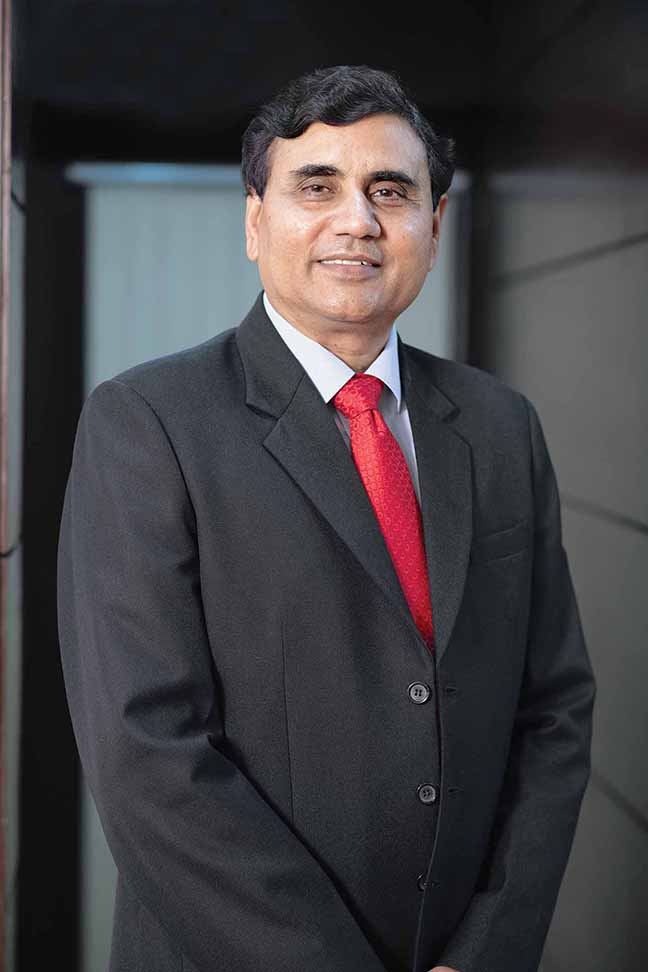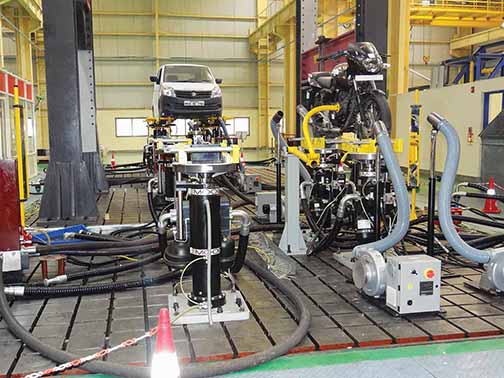In an upfront conversation, Dinesh Tyagi, Director at ICAT spoke of the need to discount 2020 from the five-year vision and 10-year target plan of ICAT.
Q. How did the pandemic influence operations spanning product development and innovation, testing and compliance?
A. During the pandemic, ICAT, in April, was fully shut. When the Haryana government allowed us to operate, we opened up at full capacity. While the employees were back in the laboratories, work was still limited. The month of May and June were not good in terms of operations. July onwards, we attained 60 per cent of our pre-Covid-19 operational levels at about two-thirds of the expected levels.
Q. To give us a sense of scale, how does ICAT compare to similar authorities in the European market?
A. If you look at the volume of work and the kind of business volume that we have been handling, it is quite large when compared to that of authorities in the European market. However, our testing fees and other charges are lower due to which our revenues are also at a comparatively lower scale.
Q. In a volatile, uncertain, complex and ambiguous environment, how did you allocate resources across the various ICAT services offered?
A. We had to freeze all our recruitments. Some people also left the organisation during this pandemic which was very surprising as they were being paid a full salary. We have refrained from hiring any new resources. The idea is to operate very efficiently and in a very lean frame, sweating all our resources.
Q. Post the BSVI rollout, what requirement are you dealing with for compliance across fuel types and vehicle segments? What has been the scale of testing and certification?
A. We have certified many BSVI products at the vehicle level and the engine level. So we have tested more than hundreds of vehicles, engines and models to give a rough idea.
Q. Taking the learnings from BSVI how is ICAT gearing for higher emission norms like BSVII? What measures are you taking to help reduce the lead time of the product development cycles?
A. There is no talk of BSVII today. Not even a discussion which has started. Once the discussion starts and the direction if given, we will align accordingly. When the discussion for BSVI had started, we started to invest in the BSVI related infrastructure. We did it at least three years ahead of the implementation. Within three years we helped the industry to carry out the fundamental work in our laboratories. Many OEMs also used our engine test labs for developing their engines.
Q. With the call for localisation driven by the ‘China + 1’ strategy and incentivisation like the PLI scheme, how geared are you to meet the expected rise in component-level testing and standardisation?
A. The PLI scheme is still new and we will have to study it deeper. So, I have asked my team to study the implication of such a kind in terms of ensuring readiness required by ICAT. However, for localisation, we are very active in the dialogue with more than 1000 clients to gauge their requirements and the level of assistance needed.
Q. How are you aiding in compliance with Global NCAP and is a Bharat New Safety Vehicle Assessment Program on the lines feasible? Is it fair to criticise failed vehicle models until then?
A. We have carried out a few global NCAP tests in our laboratories and helped few OEMs to export. The NCAP test is optional. If a competitor is getting it done and publicising its ratings, then in order to have an equivalent chance at marketing, companies undertake it. It has not completely started in India as nobody is taking a lead on the lines. There is a well-drawn Bharat NCAP program, for instance, but nobody is taking the lead. Somebody has to start. The government is also not currently for it but in Europe it is well-established. Peer pressure there is a major driving force.
Q. How are the new site II test track and tyre testing facilities aiding a superior methodology for varied vehicular segments?
A. Most of our track testing requirements are met through our captive stretch. However, still, for most of our needs, we have to go through some of our Indore or Chennai test tracks. About 75 per cent of our needs however are met through our own test tracks. So we have been able to cut down the logistics cost and time incurred otherwise. That way, it has helped us to serve our customers better.
Q. The government is pushing for flex-fuel engines? What role do you see ICAT play in helping the industry make a seamless transition and do you see manufacturers pursuing it aggressively yet?
A. Nobody can pursue it very aggressively at this point and time. First of all, a policy has to be rolled out and the future roadmap has to be made clear. For flex fuels, in many respects, to develop engines to comply with the requirements and to optimise all the performances of vehicles around the flex-fuel is no easy task. You have to first clear the policy, roll it out and then announce an implementation date. It is then that many manufacturers will be able to start work in this direction. It’s not something you can change overnight.
Up to a certain mix, the present generation engines can take it but that percentage is not more than five-10 per cent. The moment you start to go beyond 10 per cent, it has serious concern areas. Even at up to 10 per cent, there are concern areas like there is a loss of power and the emission needs to be optimised. But the moment you go beyond, the challenges are plenty as then you are dealing with different characteristics. My best guess is that if you announce any high content of flex-fuel, it will call for whole new engine development. The vehicle level optimisation will be a project of nothing less than four or five years.
Q. With the growing penetration of ‘Type 4’ cylinders powering long-haul commercial vehicles how will you ensure compliance with CAFE norms? How does the equation change with composite cylinders and biofuels coming in the mix?
A. Compliance has to be ensured by the OEMs themselves. We are a CAFE secretariat so we only monitor, review and control it. The composite cylinders are basically for hydrogen storage. LNG Storage again has a different kind of mechanism with low temperatures. Internally insulated buses are required for it.
Q. How does CAFE norm compare to RDEs under the same umbrella?
A. RDE is a Real Driving Emission which means that the emission when you test in the laboratory, on a test track. On a dynamometer, we also tried to see the results by mounting Portable Emission Measurement Systems called PEMS. So, RDE is a requirement of BSVI. All the models that are certified for BSVI also comply with RDE requirements, however, right now the exercise for data collection is going forward and the compliance factor will be validated by 2023.
Q. How do you look at the appeal for its deferment? What according to you is a priority to ensure RoI for manufacturers leapfrogging to newer standards with heavy investments?
A. Well, I cannot answer in RoI terms because the government reinforces regulations and we only assist in the process. BSVI has been enforced by the government no matter what the margin of investment that could have been lost in the BSIV compliance process. These are business risks. Regulatory compliance can change the RoI calculation at times and everybody has to be aware of what is coming their way.
Q. How has the ecosystem responded to the revised axle-load norms? Are ancillaries like tyre manufacturers able to comply in tandem?
A. Yes, I think everybody is geared up. All OEMs have recertified their products including the tyre manufacturers.
Q. On the export front, are you partnering with international certification authorities and synergising with them for Indian make vehicles and parts?
A. Yes. We have international certification partners like TUV (Rheinland, Sud) and IDIADA among others.
Q. How big an exercise is it to bring OEMs and tier suppliers, institutions and academia under one roof through an automotive solutions portal like ASPIRE alongside institutions like ARAI?
A. Our portal is called ASPIRE and ARAI have their own portal which is on similar lines. There are six technology platforms created under DHI, out of which two are designated for automotive. One of them is created by ICAT called ASPIRE and another one created by ARAI. Requiring a dedicated approach, ICAT has created the concept of a governing board which consists of 39 people from the industry including all the important CTOs and CEOs. In addition, we have created 19 sub-boards which are technology-specific which again are represented by the industry and from ICAT. So that way we have onboard the industry leaders to in turn benefit the industry by getting the wheel rolling and starting to serve the purpose of its creation. It is progressing well.
Q. How is the simulation and testing MoU with Altair progressing? And with South Korea based KIAPI?
A. With KIAPI we have done a few projects in Korea but with Altair a few training sessions, nothing big yet. Maybe in the future, we might see something materialise out of the latter.
Q. To sum it up, what is it that you expect from 2021 and what according to you are the growth and challenge areas for the medium to long-term?
A. Because of Covid-19, this financial year is going to be bad for us. So we have to really discount the performance for this year. Hopefully, 2021 will look like what this year should have ideally turned out for us in line with our 10-year target and five-year vision plans. So, whatever targets we attach for ourselves for this year, though that’s failing miserably, hopefully, we should soon be in a position to catch up shifting the roadmap timelines by one year. ACI



